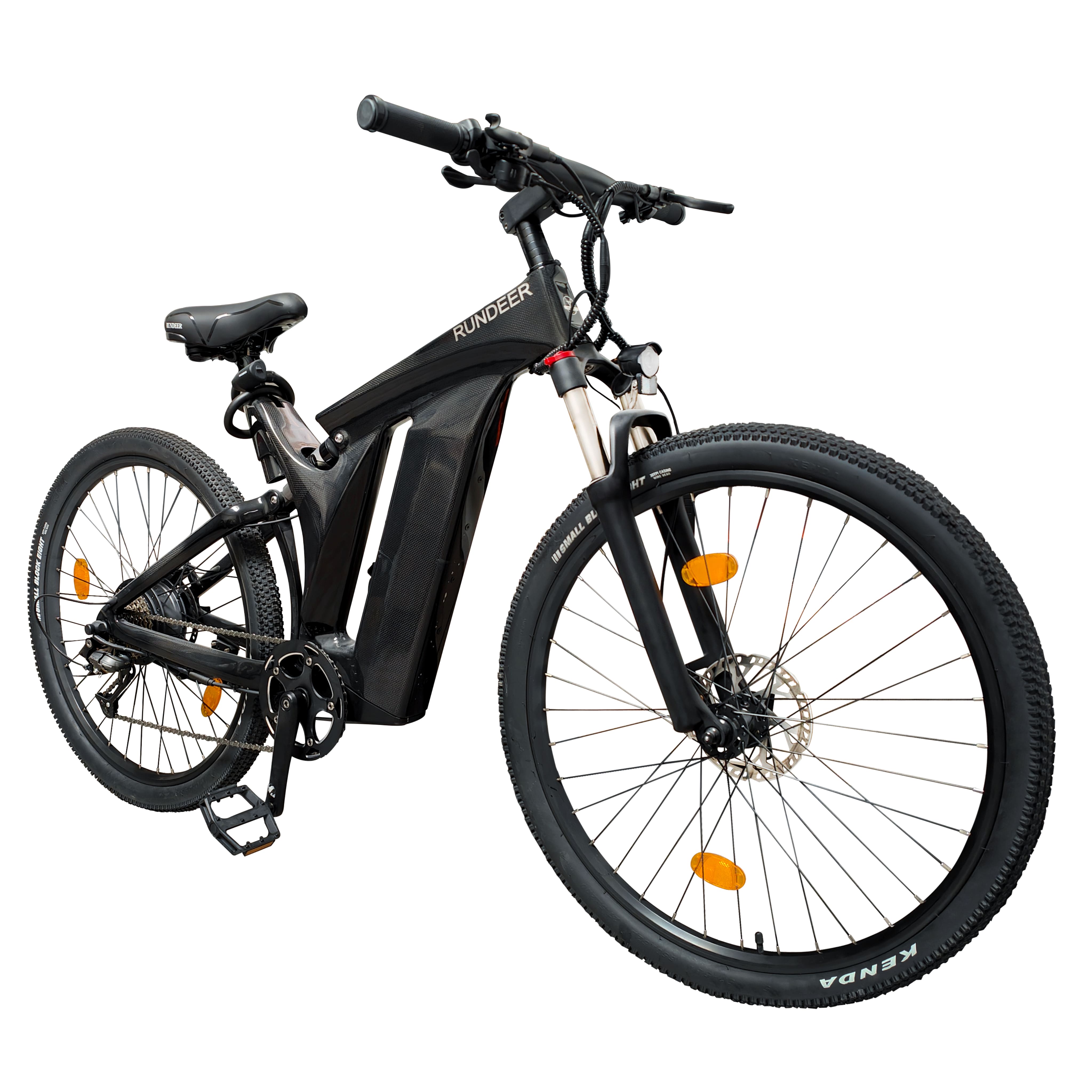The e-bike boom has transformed city transport, offering a clean mode of transportation that is efficient and fun. As e-bikes gain more popularity, it is more critical than ever before to understand how UL certification influences levels of safety as well as subsidy eligibility. Certification is the magic key that opens up vast sums of financial incentives in addition to ensuring the riders have optimal levels of safety.
What is UL Certification and Why Does It Matter?
The Safety Guardian
UL (Underwriters Laboratories) certification is the industry gold standard for product safety testing and certification. The third-party tester inspects e-bikes against rigorous safety standards, with particular focus on electrical systems, battery systems, and structural stability. For consumers, the third-party certification provides them with the confidence that their e-bike complies with safety standards.
The certification process involves intense testing that verifies the performance of e-bikes under various conditions—anywhere from extreme temperatures to impact resistance. This intense test guarantees that certified products are less likely to experience electrical breakdown or battery-related mishaps.
Regulatory Compliance
Apart from consumer confidence, UL certification verifies that e-bikes comply with federal and state regulations. As the rapidly evolving landscape of electric mobility continues, the certifications have become increasingly relevant as safety measures tighten and consumer protection grows.
The California E-Bike Incentive Project itself requires qualifying e-bikes to be UL or EN-compliant, demonstrating the manner in which certification has become a requirement of being and not an ideal alternative. The trend is not confined to a specific state, but other states do the same within their subsidy programs.
E-Bike Subsidies: A State-by-State Approach
Nationwide Momentum
Across the United States, a growing number of states have implemented subsidy programs to promote e-bike adoption as part of broader sustainability initiatives. California, Connecticut, Hawaii, Massachusetts, and Rhode Island led with statewide incentives, while Colorado, Maine, Minnesota, Vermont, and Washington have more recently introduced their own programs. This expanding network of incentives demonstrates increasing governmental recognition of e-bikes as critical components in sustainable transportation planning.
California's Comprehensive Program
California's e-bike voucher program stands as one of the most developed in the nation, offering residents up to $2,000 toward the purchase of an electric bicycle. The second application window opens April 29, 2025, at 5 p.m. with 1,000 vouchers available. The voucher can also cover accessories purchased at the same time as the bike. The program's structure emphasizes both environmental benefits and social equity, with tiered benefits based on income levels to ensure accessibility across diverse communities.
New York's Safety-Focused Approach
New York has taken a distinctive approach by emphasizing safety standards over direct subsidies. In 2023, New York City implemented legislation requiring all e-bikes sold, leased, or distributed in the city to meet UL 2849 safety standards. This regulatory framework prioritizes consumer protection while indirectly supporting the market for certified e-bikes by providing clarity on compliance requirements.
UL Certification: The Common Thread
Across all state programs, UL certification has emerged as a consistent requirement for subsidy eligibility. Whether in California's direct subsidy model or New York's regulatory approach, UL or EN-certified batteries are required for e-bikes to qualify for incentives. This standardization reflects a shared commitment to safety across jurisdictional boundaries, with certification ensuring that subsidized e-bikes meet rigorous testing protocols for electrical and battery systems.
Income-Based Accessibility
Most state programs incorporate income thresholds to ensure subsidies reach those who would benefit most from transportation alternatives. California's approach requires applicants to have household incomes at or below 300% of the Federal Poverty Level, with specific limits based on household size. Similar practices exist in other states, though specific thresholds and documentation requirements may vary according to local economic conditions and program objectives.
Common Requirements Across Programs
Despite variations in funding amounts and application processes, state subsidy programs typically share fundamental eligibility requirements:
- UL or equivalent safety certification documentation
- State residency verification
- Income qualification materials
- Pre-purchase application approval
- Requirement to purchase through approved retailers
This consistency across diverse programs reflects a growing consensus around both the safety priorities and accessibility goals that drive e-bike subsidy initiatives nationwide.
How UL Certification Lowers Costs for Consumers
Direct Financial Benefits
The most immediate benefit of choosing a UL-certified e-bike is subsidy eligibility. In California, this means access to $2,000 toward your purchase—a substantial reduction considering many quality e-bikes retail between $1,500 and $4,000. When applied to a mid-range model, this subsidy could reduce costs by 50% or more.
Beyond purchase subsidies, some municipalities offer additional incentives for UL-certified e-bikes, including reduced registration fees, access to dedicated lanes, or complementary safety courses. These cumulative benefits amplify the initial savings from the primary subsidy.
Reduced Insurance Costs
Insurance providers increasingly recognize UL certification as an indicator of reduced risk. Many offer preferential rates for certified models, acknowledging the lower likelihood of electrical fires or catastrophic component failures. Over the lifecycle of an e-bike, these insurance savings can add hundreds or even thousands of dollars to the total benefit package.
How UL Certification Improves Your Ride
Battery Safety
The battery is at once the lifeblood of an e-bike's functionality and its safety hazard. UL certification puts great weight on battery performance, testing:
● Thermal stability during charging and discharging
● Impact resistance and structural integrity
● Electrical isolation and short-circuit prevention
● Overcharge and deep-discharge protection
These specialized tests ensure certified batteries maintain stable operation even under challenging conditions, substantially reducing fire risks compared to uncertified alternatives. The UL certification process takes a holistic system approach when evaluating products containing lithium-ion batteries, encompassing not just the battery cells and packs, but also motors, controllers, and the human-machine interface.
Enhanced Component Quality
UL certification brings overall component quality up and beyond the battery. Certified e-bikes typically include:
● Superior wiring and electrical connections
● More robust waterproofing
● Higher-grade braking systems
● More durable frame construction
This general enhancement in quality translates directly in terms of rider safety, with certified models experiencing better rates of component failure in all systems.
System Integration Reliability
UL certification doesn't just test individual components—it evaluates how the entire system functions together. The UL 2849 certification comprehensively covers the entire electrical system of an e-bike, including the motor, battery, controller, charger, wiring, sensor, and display, guaranteeing these components work together safely and reliably. This systems approach means:
● Smoother power delivery and acceleration
● More consistent battery life and range
● Reduced electromagnetic interference between components
● Better heat management throughout the system
For riders, this translates to "peace of mind knowing your e-bike battery meets rigorous safety standards" and typically results in "longer-lasting battery performance, giving you more reliable adventures." The certification process also ensures that all components can handle environmental factors like temperature extremes, humidity, and vibration that are common during regular riding.
Advanced Safety Features
UL-certified e-bikes often incorporate additional safety features into meeting certification requirements. Many certified e-bikes include enhanced safety features like "hydraulic disc brakes, super bright headlights (up to 2,000 lumens), integrated brake lights, turn signals and rearview mirrors" beyond minimum standards to safeguard riders. Safety factors even reach into the overall user experience, creating a more secure and enjoyable ride no matter what.

Long-Term Savings: Maintenance and Durability Benefits
Extended Lifespan
The rigorous testing that UL certification requires does not just promise safety—it promises durability indirectly. Certified e-bikes use superior materials and construction techniques that extend their functional lifespan. Most certified units maintain optimal function for 5-7 years with proper maintenance, compared to 2-3 years for uncertified versions.
This extended life has the effect of reducing the ownership cost on a per-year basis, amplifying the upfront subsidy savings over time. A $2,000 initial saving combined with an additional 3-4 years of usage can equate to thousands in savings on replacement costs.
Lower Maintenance Requirements
Certified e-bikes require less frequently and less expensive maintenance. The quality components reduce the likelihood of electrical failures, bearings replacement, and drivetrain issues. Owners typically save 30-50% annually on maintenance compared to non-certified models, which equates to hundreds of dollars of additional savings per year.
Secure Your Safer, More Affordable E-Bike!
UL certification is where savings and safety meet in the e-bike market. By opting for certified models, you not only protect yourself with tested safety standards, but you also unlock large financial incentives that bring greener transport within reach than ever before. As e-bike technology continues to improve and subsidy plans expand, certified models will be the intelligent choice for ethical consumers who desire both security and value.













